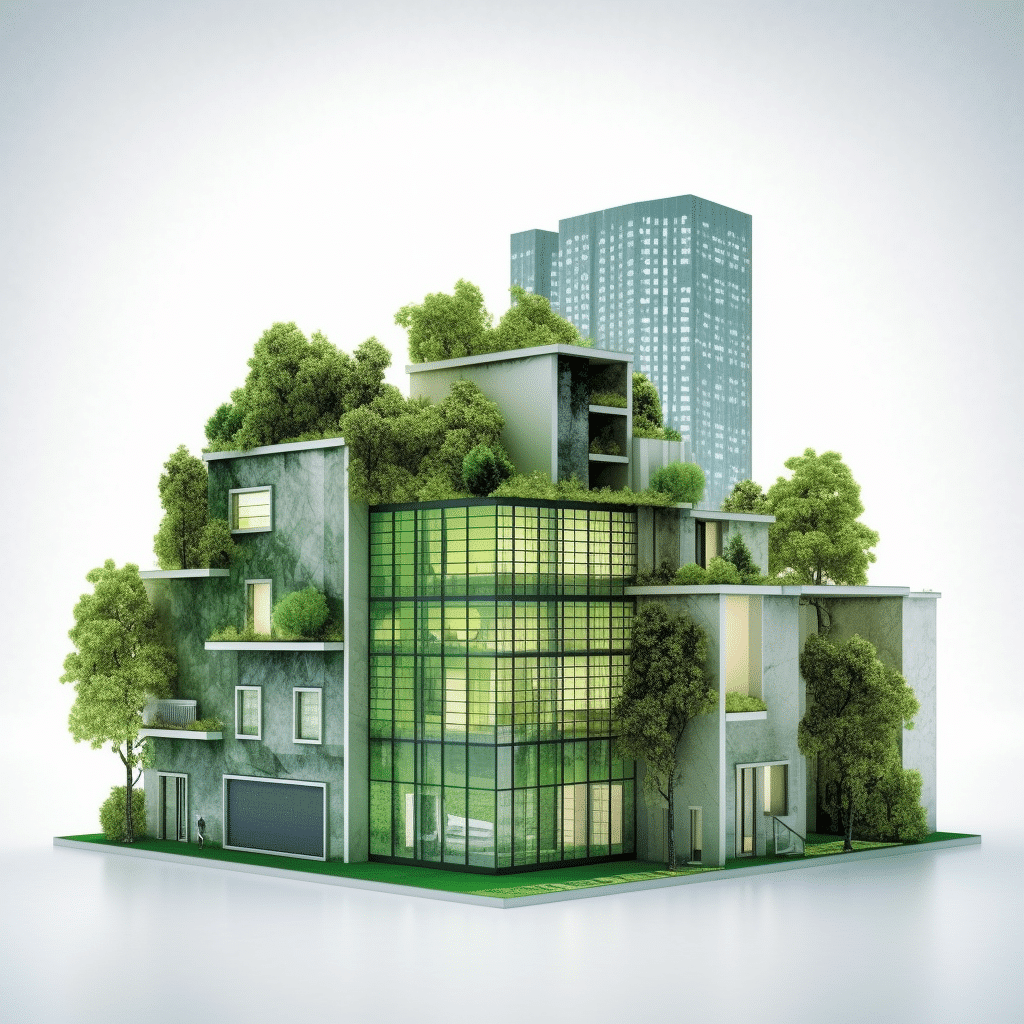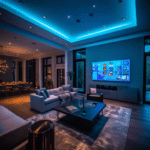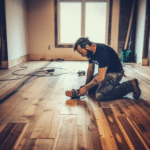.jpg)
Table of Contents
Introduction to Green Building Practices
Green building practices focus on creating structures that are eco-friendly, energy-efficient, and sustainable. Renewable resources, efficient water and waste management systems, and reducing carbon emissions are all prioritized. Sustainable materials and innovative tech offer lower operating costs, better indoor air quality, and a smaller environmental impact.
Passive design strategies are a key part of green building. Natural lighting and ventilation are maximized to reduce artificial lighting and mechanical cooling. Building orientation, insulation levels, and window placement are optimized to maintain comfortable temperatures and reduce energy consumption.
Renewable energy sources, like solar panels or geothermal systems, generate electricity and provide heating and cooling. This reduces reliance on fossil fuels and helps create a sustainable energy future. Water conservation measures, such as rainwater harvesting and low-flow fixtures, decrease water usage and strain on local supplies.
Environmentally conscious materials are an essential consideration. Products with a lower environmental impact during their life cycle are a must, from manufacturing to disposal. Sustainably sourced wood and recycled materials for construction reduce deforestation and landfill waste.
When beginning a green building project, it’s important to conduct a feasibility analysis. Consider things like location suitability, cost-benefit analysis of sustainable features, and potential incentives or certifications available for green buildings. Building green is great for reducing energy waste and high utility bills!
Energy Efficiency in Green Building Practices
Energy efficiency in green building practices involves applying sustainable techniques to lower energy use and reduce environmental harm.
- Insulation systems can decrease heat transfer, making buildings more energy efficient.
- Utilizing energy-efficient appliances and LED lighting fixtures reduces electricity usage.
- Installing solar panels or wind turbines provides clean, renewable energy on-site.
Plus, employing smart tech such as programmable thermostats and occupancy sensors can further enhance green building energy efficiency.
These practices can not only reduce carbon emissions, but also provide long-term cost savings.
The Bullitt Center in Seattle, Washington is an example of the effectiveness of energy-efficient green building practices. This six-story office building produces almost 60% more energy than it consumes due to its features like triple-glazed windows, rainwater harvesting systems, and an extensive rooftop solar array. The Bullitt Center is a model for sustainable design and demonstrates how energy efficiency can be achieved in green building practices.
Building green entails using eco-friendly materials, because it would be hard to think kindly about saving the planet if your house was made from melted polar bears.
Sustainable Materials and Resources
Mike’s journey to a greener future saw him renovate his house with sustainable materials, such as bamboo flooring. Its rapid regrowth rate reduced deforestation and gave his home a unique, natural look.
A table showcases the benefits of some sustainable materials and resources:
| Materials | Benefits |
|---|---|
| Bamboo | Rapid re-growth |
| Recycled Glass | Reduced energy consumption |
| Low VOC Paints | Lower air pollution |
| FSC-Certified Wood | Sustainably harvested |
Plus, using natural insulation materials like wool or cork and installing rainwater harvesting systems are other eco-friendly practices in construction. This way, you can have a breath of fresh air indoors – even the dust particles have a touch of eco-friendliness!
Indoor Environmental Quality in Green Buildings
Building green means achieving optimal Indoor Environmental Quality in Green Buildings. To do this, low-emission materials and efficient ventilation systems are used to keep air clean. Plus, energy-efficient lighting fixtures & natural light optimization techniques create a pleasant atmosphere. Thermal comfort is ensured through insulation, HVAC systems and temperature regulation. And sound insulation minimizes external noise for peaceful spaces. Other factors such as outdoor views, moisture control & non-toxic cleaning products also contribute.
The LEED rating system, established by the U.S. Green Building Council in 2000, emphasizes Indoor Environmental Quality. This encouraged developers & architects to prioritize this aspect in green buildings. Today, green buildings are dedicated to occupant health & well-being through improved air quality, lighting, thermal comfort & acoustic performance. It’s driving positive change & sustainable living environments.
Green Building Certifications and Standards
Green Building Certifications and Standards offer comprehensive overviews.
LEED provides a framework to make cost-saving, healthy, and efficient green buildings. U.S. Green Building Council (USGBC) is the organization.
BREEAM is an internationally recognized rating system from BRE Global. This assesses the sustainability of buildings.
WELL Building Standard focuses on improving health and well-being. It is presented by International WELL Building Institute (IWBI).
Passivhaus, Living Building Challenge, and EDGE are other notable standards.
The Edge building in Amsterdam achieved the highest BREEAM score. Advanced energy-efficient technologies and sustainable materials minimize energy and environmental impact.
As we progress, architects, builders, and developers must consider these benchmarks. Sustainable practices save the planet and make architects look cool!
Case Studies of Successful Green Building Projects
Green building practices have gained much attention lately due to their positive environmental influence. To better understand their success, we’ve put together a collection of case studies highlighting great green building initiatives. Let’s explore these cases with a cool table that shows key details and accomplishments. Check out the table below:
| Project Name | Location | Cert. | Energy Efficiency |
|---|---|---|---|
| EcoTower | NY | LEED Platinum | 40% cut |
| SolarVista | CA | Green Star | Net Zero Energy |
| S. Skyscrapers | SG | BCA Green Mark | 50% cut |
These projects prove how effective green building practices are. EcoTower in NY got LEED Platinum and reduced energy by 40%. SolarVista in CA got Green Star with net-zero energy goal. S. Skyscrapers in SG cut energy use by 50% with BCA Green Mark standards.
These examples show the various successful green building projects from different places and certifications. Every project contributes significantly to sustainability and is an amazing example for future projects.
Be part of this worldwide movement for a greener future. Join forces with others and make a real difference in protecting our environment and ensuring a sustainable future. Act now!


